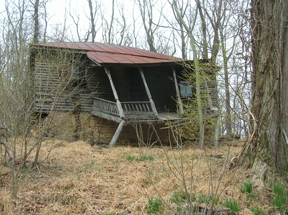Two years ago I published a post about Hungrytown, in southern Albemarle County.

Recently I received an email from a descendant asking about a nearby cemetery. I visited the cemetery a number of years ago. It contains the graves of families who lived in the neighborhood: Toms, Meltons, and others.

Unfortunately only one stone is inscribed: that of a veteran, Wilton Toms (1828-1910) who served in the 46th Virginia Infantry during the Civil War. The stone was placed recently, in the past decade or so, to commemorate his service. The other family members are buried under fieldstones, some shaped, others plain. The fate of this cemetery - unmarked stones in a hard-to-find, rural location - is all too common.

Where rural communities once flourished and shared the knowledge of who was buried in which grave, today these neighborhoods are often unpopulated or the original residents (and their memories) are long gone. One option for preserving the location of historic burials is to install a metal plaque with a list of the names of the dead. This information could be collected from the memory of residents and family members. While it would not be possible, in most cases, to assign names to individual graves, a plaque would help preserve the family ties to the graveyard.

Another option is submitting a list of burials and photographs to a nearby historical society and/or county planning department. That way there will be a paper trail for future researchers. Perhaps the most important strategy for protecting these sites is to keep the memory of the dead alive in the younger generations so that they feel connected to these sacred spaces, visit, and care for the graves. This is easier said than done, but making the effort will ensure that these historic burial grounds are not forgotten by the next generation.
